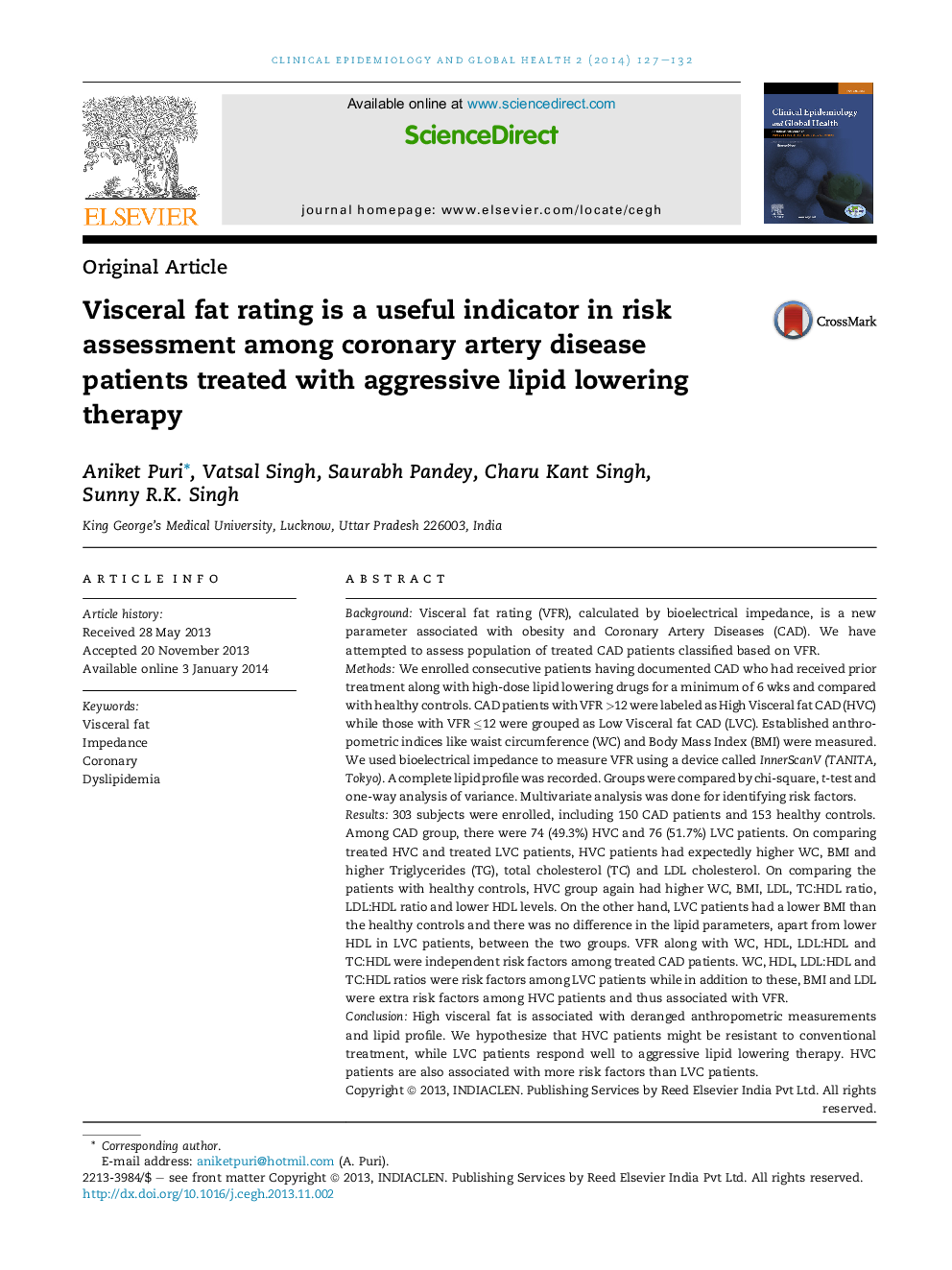| کد مقاله | کد نشریه | سال انتشار | مقاله انگلیسی | نسخه تمام متن |
|---|---|---|---|---|
| 3396258 | 1221915 | 2014 | 6 صفحه PDF | دانلود رایگان |
BackgroundVisceral fat rating (VFR), calculated by bioelectrical impedance, is a new parameter associated with obesity and Coronary Artery Diseases (CAD). We have attempted to assess population of treated CAD patients classified based on VFR.MethodsWe enrolled consecutive patients having documented CAD who had received prior treatment along with high-dose lipid lowering drugs for a minimum of 6 wks and compared with healthy controls. CAD patients with VFR >12 were labeled as High Visceral fat CAD (HVC) while those with VFR ≤12 were grouped as Low Visceral fat CAD (LVC). Established anthropometric indices like waist circumference (WC) and Body Mass Index (BMI) were measured. We used bioelectrical impedance to measure VFR using a device called InnerScanV (TANITA, Tokyo). A complete lipid profile was recorded. Groups were compared by chi-square, t-test and one-way analysis of variance. Multivariate analysis was done for identifying risk factors.Results303 subjects were enrolled, including 150 CAD patients and 153 healthy controls. Among CAD group, there were 74 (49.3%) HVC and 76 (51.7%) LVC patients. On comparing treated HVC and treated LVC patients, HVC patients had expectedly higher WC, BMI and higher Triglycerides (TG), total cholesterol (TC) and LDL cholesterol. On comparing the patients with healthy controls, HVC group again had higher WC, BMI, LDL, TC:HDL ratio, LDL:HDL ratio and lower HDL levels. On the other hand, LVC patients had a lower BMI than the healthy controls and there was no difference in the lipid parameters, apart from lower HDL in LVC patients, between the two groups. VFR along with WC, HDL, LDL:HDL and TC:HDL were independent risk factors among treated CAD patients. WC, HDL, LDL:HDL and TC:HDL ratios were risk factors among LVC patients while in addition to these, BMI and LDL were extra risk factors among HVC patients and thus associated with VFR.ConclusionHigh visceral fat is associated with deranged anthropometric measurements and lipid profile. We hypothesize that HVC patients might be resistant to conventional treatment, while LVC patients respond well to aggressive lipid lowering therapy. HVC patients are also associated with more risk factors than LVC patients.
Journal: Clinical Epidemiology and Global Health - Volume 2, Issue 3, December 2014, Pages 127–132
